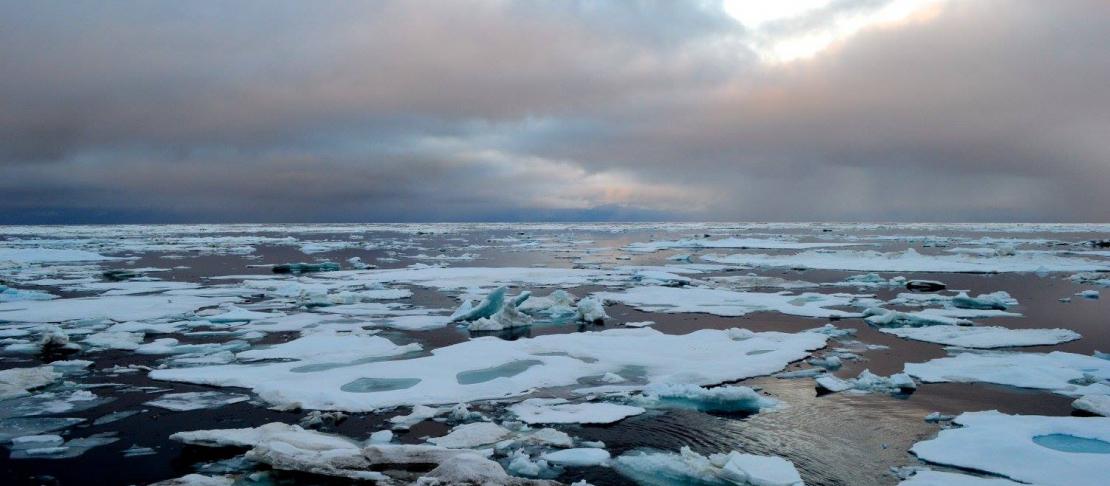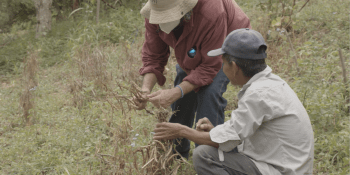What the freak warming around the North Pole means for smallholders in the tropics

Increasing variability in Arctic temperatures could potentially be linked to climate variability in the tropics, exacerbating climate-related challenges for smallholder farmers.
Last week, the North Pole was warmer than much of Europe. The unprecedented warm spell caused a media storm, and raised questions about whether global warming was to blame.
Extreme events: bad news for farmers
It is still unclear whether this event can be attributed to global warming. But scientists’ observations are worrying, as it could mean that agricultural impact scientists are underestimating the probability and extent of extreme events. This could mean more frequent and more severe droughts and floods, and longer periods of very high temperatures, for example, with negative effects on livelihoods, human health and nutrition, and agricultural production.
We need more work on potential impacts in those tropical environments where there is a lot of climate variability to begin with.
A lot of climate change impact work in agriculture has focused on longer-term effects of climate change on tropical and temperate agriculture, but less is known about short-term effects. The first principles of climate science tell us that more heat (energy) in the global system will increase the variability in the system – though exactly how this increased variability will manifest itself is not yet clear. We need more work on potential impacts in those tropical environments where there is a lot of climate variability to begin with.
Increased climate and weather variability for smallholders in lower income countries is generally not good news. Bad harvest years can have overwhelmingly negative effects on smallholder livelihoods, far greater than the positive effects of good harvest years – thus, the “outcome distributions” are not symmetrical. Hence, there is need for adaptation and risk reduction measures at household and policy levels.
Coping with unpredictable climate
Whether or not there is a strong link between global warming and unprecedented weather patterns, the frequency and severity of extreme weather events are making farming a risky business. The CGIAR Research Program on Climate Change, Agriculture and Food Security (CCAFS) works with partners around the world to help farmers deal with increasingly unpredictable weather patterns.
For example, the Future Scenarios project has developed socio-economic and climate scenarios at regional levels as a tool for strategic policy planning and investment decisions. Through the project, diverse groups of stakeholders in six regions worldwide have created detailed scenarios picturing a range of possible futures for their regional climate, economy and society. This work has influenced planning and policy formulation in several countries. In West Africa, CCAFS and partners aim to extend the use of climate information services to over 2 million farmers by 2019 to reduce the impact of seasonal climate risk, from farm level to national level. CCAFS and partners work with governments and research institutes, for example in Latin America, to ensure the latest climate and agriculture science is used to inform climate and agriculture policies.
Climate variability is increasing with warming, and perhaps faster than previously envisaged, though that is yet to be demonstrated – but all the more reason for collective mitigation of greenhouse gases to help address the problem in the long-term, and to strengthen efforts to support the vulnerable to adapt in the shorter-term.
Interested in policies and priorities for climate-smart food systems? Subscribe to our newsletter to receive quarterly updates on our CCAFS work and occasional announcements.
Read more:
- News article: Arctic warming: scientists alarmed by 'crazy' temperature rises in The Guardian.
- Info Note: Climate change, food security and small-scale producers: Analysis of findings of the Fifth Assessment Report (AR5) of the Intergovernmental Panel on Climate Change (IPCC).
- Working paper: Simulating stakeholder-driven food and climate scenarios for policy development in Africa, Asia and Latin America: A multi-regional synthesis.
- Working paper: 10 best bet innovations for adaptation in agriculture: A supplement to the UNFCCC NAP Technical Guidelines.
Philip Thornton is the CCAFS Priorities and Policies for CSA Flagship Leader.



